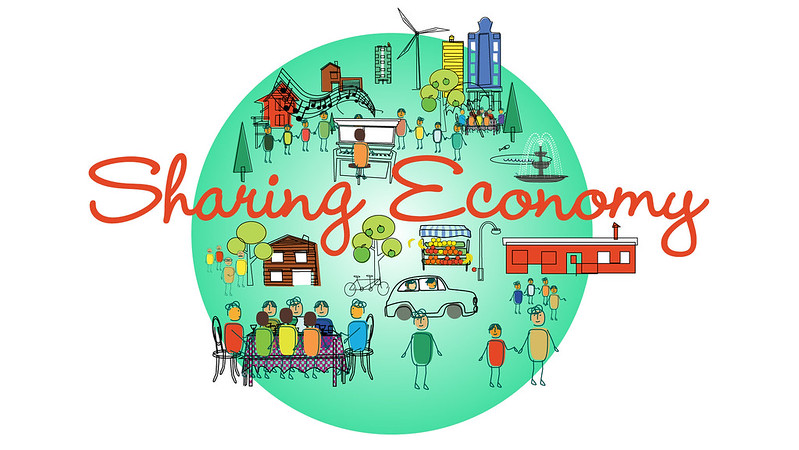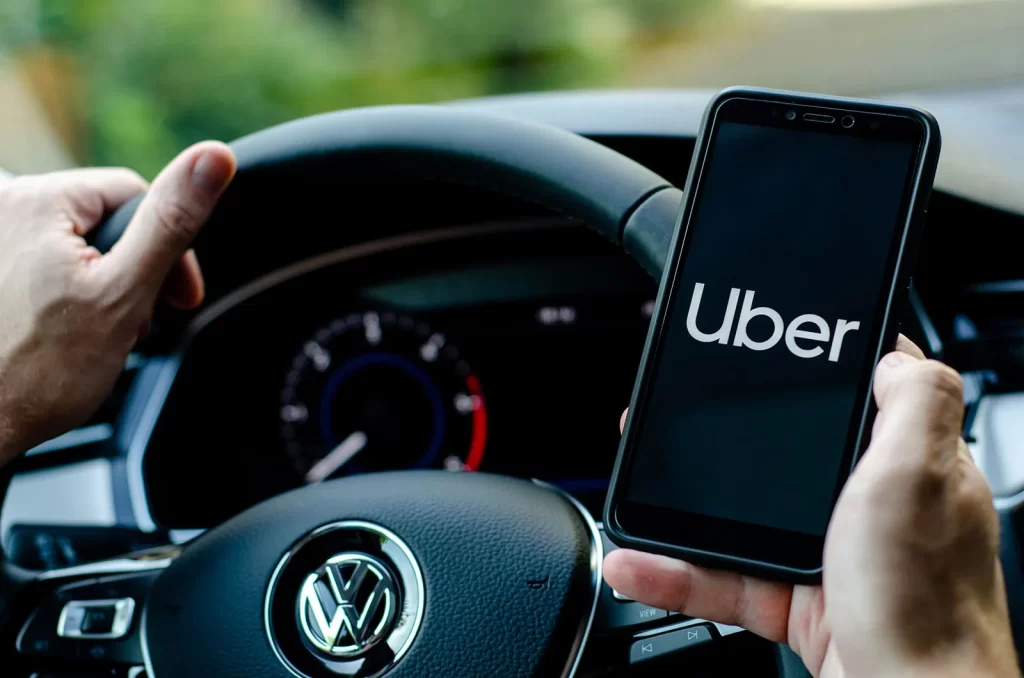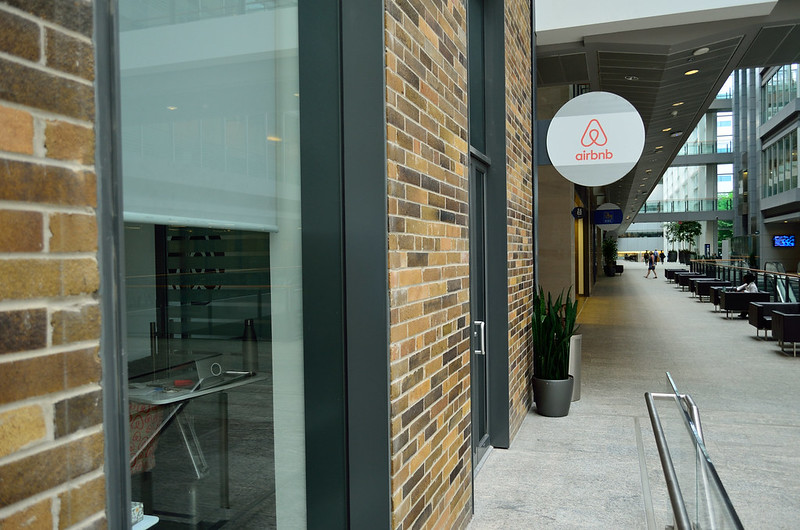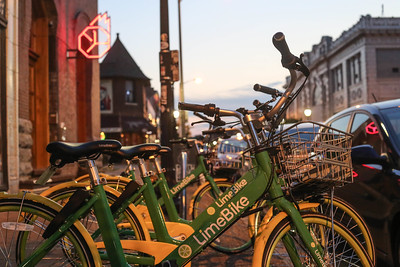Jiawen Jia, Yi Wu.

“sharing economy” by Trikle Trade is licensed under CC BY-ND 2.0.
Uber serves as a prominent illustration of the sharing economy in action. In this economic model, individuals can share or rent their underutilized assets or services directly with others, often facilitated through digital platforms or apps. When riders use the Uber app to specify their destination, the platform connects them with an Uber driver—an independent contractor or gig worker—who transports them to their desired location. In return for offering their vehicle and time, the driver receives a base fare from Uber and may also receive a tip from the rider. This arrangement allows the rider to reach their destination using someone else’s vehicle. In summary, Uber exemplifies the sharing economy by enabling individuals to share their personal vehicles (assets) with others in need of transportation, all facilitated through a digital platform. This model has transformed the traditional taxi industry and has implications for how we think about employment, assets, and services in the modern economy.

“Uber logo” by Encyclopædia Britannica is licensed under Encyclopædia Britannica
Airbnb is a prominent example of the sharing economy, where individuals can offer accommodations they own to travellers, often for monetary compensation. As well as allowing for monetary exchange, the platform allows its users the opportunity to share experiences and discover other cultures. Established in 2008, Airbnb has significantly disrupted the travel and real estate markets in certain urban areas.
Overall, Airbnb exemplifies the sharing economy by allowing individuals to share their homes and experiences with travellers, fostering cultural exchange and providing an income source for hosts. While it has transformed the travel industry and introduced innovative lodging options, it has also sparked debates about its effects on housing affordability and local housing markets in some urban regions.

“Airbnb” by Open Grid Scheduler / Grid Engine is licensed under CC BY-ND 2.0.
Lime, a bike-sharing and electric scooter-sharing company, is a prime example of the sharing economy characterized by the efficient utilization of resources through peer-to-peer transactions. In summary, Lime embodies the sharing economy by enabling individuals to share their bicycles and electric scooters with the public. This model promotes resource efficiency, environmental sustainability, and community engagement while providing income opportunities for vehicle owners. Lime’s digital platform, global reach, and dedication to sustainable urban transportation align with the principles of the sharing economy.

“Lime Bikes” by Paul Sableman is licensed under CC BY-ND 2.0.
Reference list
Author, S. (2021, November 10). What Is The Sharing Economy? The balance. https://w. ww.thebalancemoney.com/what-is-the-sharing-economy-5188892#:~:text=For%20example%2C%20Uber%20is%20one,the%20rider%20to%20their%20destination.
Quattrone, G., Kusek, N. & Capra, L. (2022). A global-scale analysis of the sharing economy model – an AirBnB case study. EPJ Data Sci. 11, 36 . https://doi.org/10.1140/epjds/s13688-022-00349-3